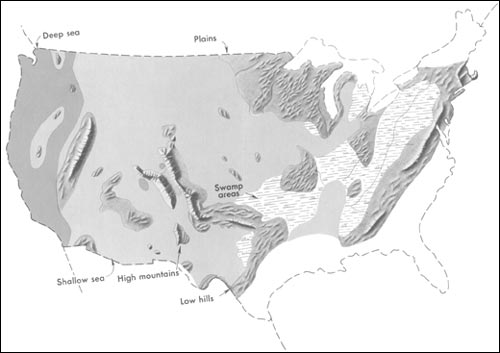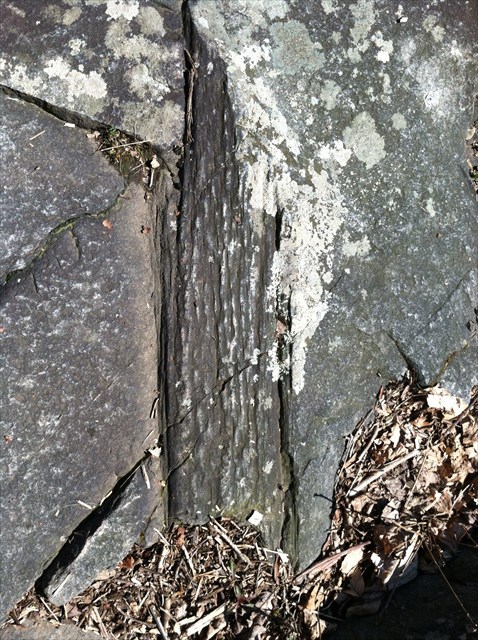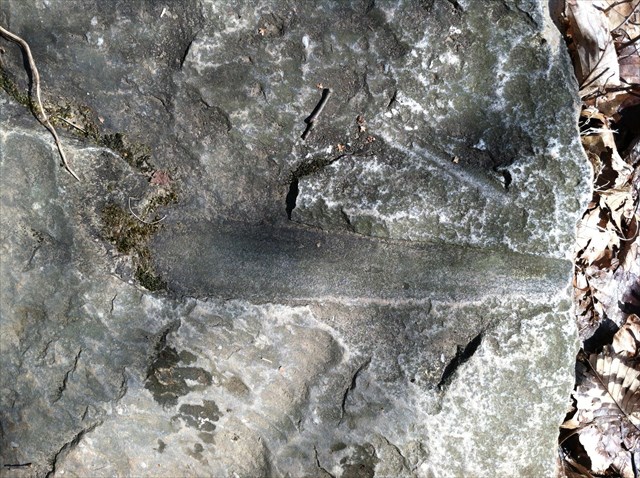Fossils on Ferncliff Peninsula
Ferncliff Peninsula, located in Ohiopyle State Park, is designated a National Natural Landmark because of its botanical diversity. The current diversity of plant life on the 100 acre peninsula is due to the northern flow of the Youghiogheny River carrying seeds from southern states and depositing them on the peninsula. The peninsula’s slightly warmer weather than the surrounding area, allows these southern species to survive the inhospitable winters of the Laurel Highlands.
While the current botanical life is of interest, this Earth Cache is a lesson on the botanical life of Ferncliff Peninsula’s distant past. The Peninsula provides a historical record of the plant life in the region over 300 million years ago. This record is captured in fossilized plants imbedded in the peninsula’s sandstone. Over many years, erosion has revealed the entombed fossilized remains of the ancient plant life that once flourished in this area.
Begin your search at the far end of the parking area. You will see the sign in the photo above. Follow the trail from the sign and bear left onto the Ferncliff Trail.
Geological Time Frame
The fossilized trees on Ferncliff Peninsula lived during the Palaeozoic Era. This era spans 322 million years, beginning with the Cambrian period 570 million years ago, and finishing with the end of the Permian period 248 million years ago. Now a lot happened during this era and the plant life on display was only found here for a period of this time.
The Carboniferous Period occurred from about 354 to 290 million years ago during the late Paleozoic Era. The term "Carboniferous" is used throughout the world to describe this period; the name comes from the Latin word for coal, carbo. Carboniferous means "coal-bearing". In the United States this period has been separated into the Mississippian (Lower Carboniferous) and the Pennsylvanian (Upper Carboniferous) to better define the rock formations developed during this period.
The Pennsylvanian time period lasted from 325 to 286 million years ago, a time span of 39 million years. The term Pennsylvanian was first used in the late 1800s to describe geological features, were else, in Pennsylvania. It is during the Pennsylvanian period that the fossilized plants you will be finding lived.
The Map of US during Pennsylvanian Period


A Fossil Primer:
A fossil is an impression, cast, or track of any animal or plant that is preserved in rock after the original organic material is transformed or removed.
• Fossils give clues about organisms that lived long ago
• They also provide evidence about how Earth’s surface has changed over time
• Fossils help scientists understand what past environments may have been like
Permineralization
Permineralization is the most common process for preserving ancient plant and animal material. Fossils are developed by plant and animal organic material being covered by sediment layers, eliminating oxygen, thereby bacteria to prevent decomposition. If mineral-rich water percolates down through the sediments, the fossil formation process has an even better chance of developing . Some of the minerals stick to the particles of sediment, binding them together into a solid mass with molecules of calcite or other minerals. In time the organic material is replaced leaving rock in the shape of the original organic material.
Erosion at work
Fossil formations are revealed by erosion. Wind, rain, freeze and thaw, rivers, even earthquakes will help force fossils out of their stone tombs for us to observe.
To claim this Earthcache please answer the following:
A)At each of the following coordinates fossil specimens can be found. Please match the fossil photos below to the appropriate coordinates and provide the name of the fossil type:
1) N 39 52.170 W 079 29.770 ____
2) N 39 52.212 W 079 29.746 ____
3) N 39 52.189 W 079 29.762 ____
B) How many inches long is the Lepidodendron scale fossil?
C) Describe the terrain at Ferncliff Peninsula during the Pennsylvanian Period?
Calamites

Lepidodendron scale

Cordaites
 |